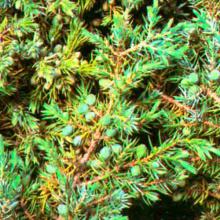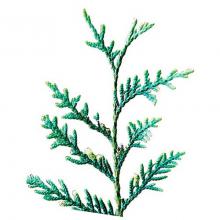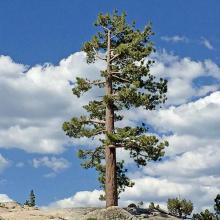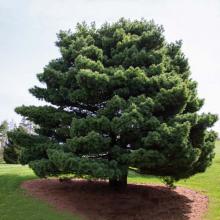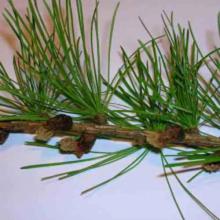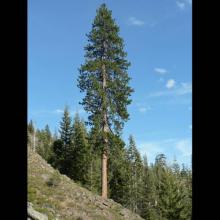Juniperus communis
Common name:
Common juniper
Class:
Pinopsida
Phylum:
Pinophyta
Superphylum:
Thuja occidentalis
Common name:
Eastern white cedar
Class:
Pinopsida
Phylum:
Pinophyta
Superphylum:
Pinus contorta
Common name:
Lodgepole pine
Class:
Pinopsida
Phylum:
Pinophyta
Superphylum:
Pinus strobus
Common name:
Eastern white pine
Class:
Pinopsida
Phylum:
Pinophyta
Superphylum:
Larix decidua
Common name:
European Larch
Class:
Pinopsida
Phylum:
Pinophyta
Superphylum:
Pinus ponderosa
Common name:
Ponderosa pine
Class:
Pinopsida
Phylum:
Pinophyta
Superphylum:
Juniperus communis
Common name:
Common juniper
Class:
Pinopsida
Phylum:
Pinophyta
Kingdom:
Plantae
Thuja occidentalis
Common name:
Eastern white cedar
Class:
Pinopsida
Phylum:
Pinophyta
Kingdom:
Plantae
Pinus contorta
Common name:
Lodgepole pine
Class:
Pinopsida
Phylum:
Pinophyta
Kingdom:
Plantae
Pinus strobus
Common name:
Eastern white pine
Class:
Pinopsida
Phylum:
Pinophyta
Kingdom:
Plantae
Larix decidua
Common name:
European Larch
Class:
Pinopsida
Phylum:
Pinophyta
Kingdom:
Plantae
Pinus ponderosa
Common name:
Ponderosa pine
Class:
Pinopsida
Phylum:
Pinophyta
Kingdom:
Plantae
Juniperus communis
Common name:
Common juniper
Class:
Pinopsida
Phylum:
Pinophyta
Thuja occidentalis
Common name:
Eastern white cedar
Class:
Pinopsida
Phylum:
Pinophyta
Pinus contorta
Common name:
Lodgepole pine
Class:
Pinopsida
Phylum:
Pinophyta
Pinus strobus
Common name:
Eastern white pine
Class:
Pinopsida
Phylum:
Pinophyta
Larix decidua
Common name:
European Larch
Class:
Pinopsida
Phylum:
Pinophyta
Pinus ponderosa
Common name:
Ponderosa pine
Class:
Pinopsida
Phylum:
Pinophyta
Phylum (Plantae): Pinophyta
The Pinophyta, also known as Coniferophyta or Coniferae, or commonly as conifers, are a division of vascular land plants containing a single extant class, Pinopsida. They are cone-bearing seed plants, a subset of gymnosperms. All extant conifers are perennial woody plants with secondary growth. The great majority are trees, though a few are shrubs. Examples include cedars, Douglas firs, cypresses, firs, junipers, kauri, larches, pines, hemlocks, redwoods, spruces, and yews. As of 1998, the division Pinophyta was estimated to contain eight families, 68 genera, and 629 living species.
Although the total number of species is relatively small, conifers are ecologically important. They are the dominant plants over large areas of land, most notably the taiga of the Northern Hemisphere, but also in similar cool climates in mountains further south. Boreal conifers have many wintertime adaptations. The narrow conical shape of northern conifers, and their downward-drooping limbs, help them shed snow. Many of them seasonally alter their biochemistry to make them more resistant to freezing. While tropical rainforests have more biodiversity and turnover, the immense conifer forests of the world represent the largest terrestrial carbon sink. Conifers are of great economic value for softwood lumber and paper production.
Morphology
All living conifers are woody plants, and most are trees, the majority having monopodial growth form (a single, straight trunk with side branches) with strong apical dominance. Many conifers have distinctly scented resin, secreted to protect the tree against insect infestation and fungal infection of wounds. Fossilized resin hardens into amber. The size of mature conifers varies from less than one meter, to over 100 meters. The world's tallest, thickest, largest, and oldest living trees are all conifers. The tallest is a Coast Redwood (Sequoia sempervirens), with a height of 115.55 meters (although one Victorian mountain ash, Eucalyptus regnans, allegedly grew to a height of 140 meters, although the exact dimensions were not confirmed). The thickest, or tree with the greatest trunk diameter, is a Montezuma Cypress (Taxodium mucronatum), 11.42 meters in diameter. The largest tree by three-dimensional volume is a Giant Sequoia (Sequoiadendron giganteum), with a volume 1486.9 cubic meters. The smallest is the pygmy pine (Lepidothamnus laxifolius) of New Zealand, which is seldom taller than 30 cm when mature. The oldest is a Great Basin Bristlecone Pine (Pinus longaeva), 4,700 years old.
Reference: Wikipedia

